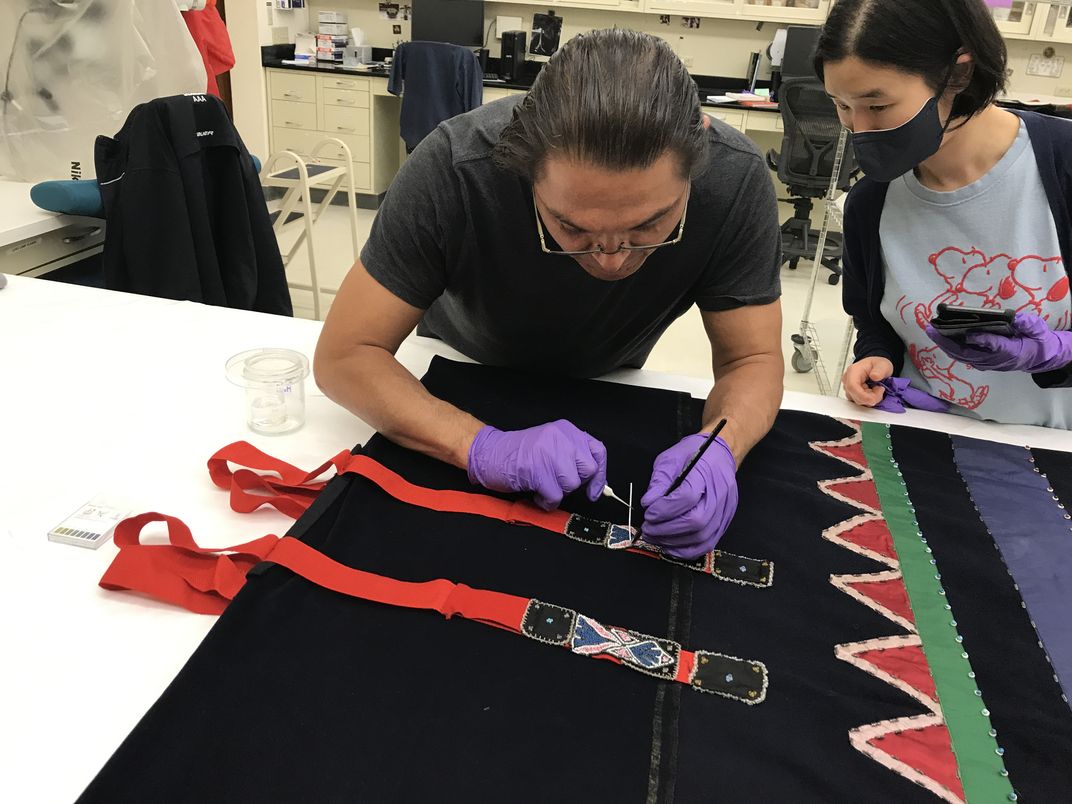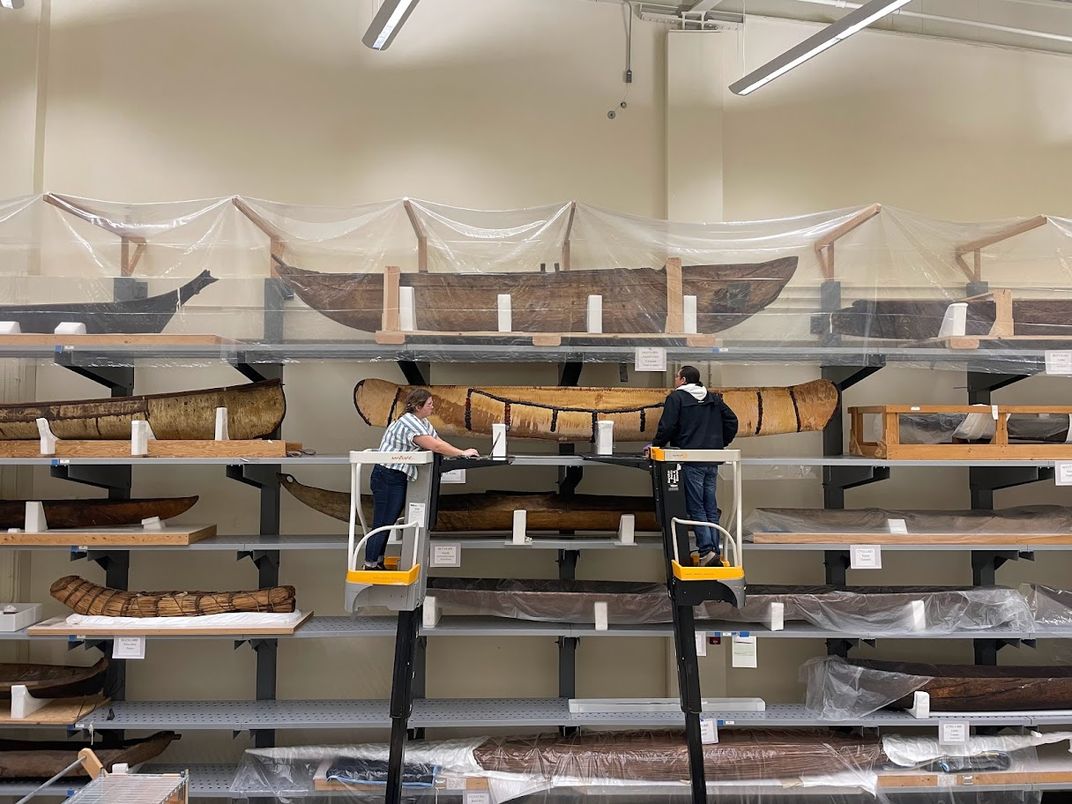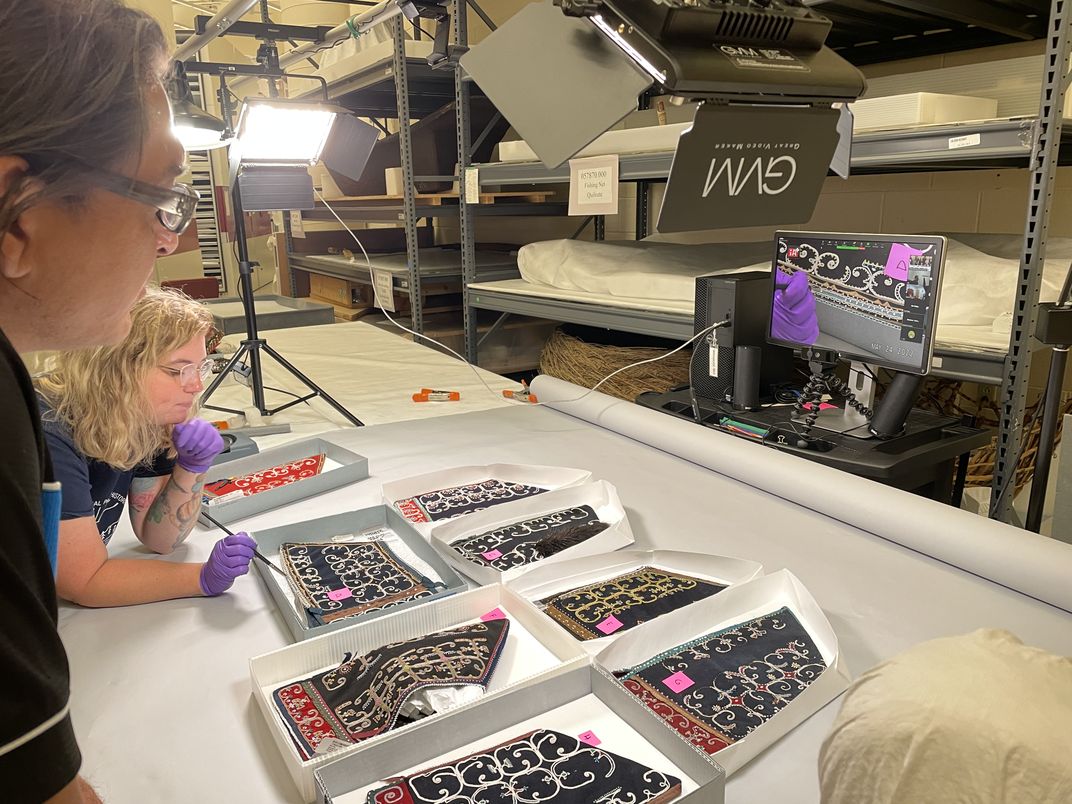NATIONAL MUSEUM OF THE AMERICAN INDIAN
How Shared Stewardship Is Bringing to Light One of the World’s Most Significant Holdings of Mi’kmaw Cultural Items
How do two institutions work in partnership across borders and time zones to care for cultural items? More than 25 years ago, the Mi’kmawey Debert Cultural Centre (MDCC) in Nova Scotia and the Smithsonian’s National Museum of the American Indian began a partnership that continues today.

How do two institutions work in partnership across borders and time zones to care for cultural items? More than 25 years ago, the Mi’kmawey Debert Cultural Centre (MDCC) in Nova Scotia and the Smithsonian’s National Museum of the American Indian began a partnership that continues today. The Mi'kmawey (pronounced "meeg-a-mow-ey") Debert Cultural Centre considers the Mi’kmaw (pronounced "meeg-uhm-ow") collections at the museum to be one of the most significant holdings of Mi’kmaw cultural items in the world. Unlike other museum collections, the group of almost 500 items are well provenanced with comprehensive collectors’ notes and photography of the items with the people who owned them. They also represent diverse everyday activities and numerous communities within Mi’kma’ki (pronounced “meeg-mag-ee”). The items range from ash baskets, colorful quilled birchbark containers, intricately beaded caps, tools for hunting and coopering, and two complete wigwams. Over the years, the MDCC has brought groups of elders here to visit their cultural items and work with the archival material. The work has a community impact as they link specific families to items and reconnect stories, language, and other practices.
Today, the MDCC is in the final stages of planning a physical Centre for the community to engage, exhibit, and research. As part of this effort the museum and MDCC are working together to bring home the collections in Washington D.C. to steward the objects in community where the cultural knowledge lives. Prior to the objects’ return, a complete survey of the condition of the items is necessary to confirm they are stable enough to travel and to what extent and nature of stabilization needs to occur.

It is rare for people to be able to commit months of their time to conservation work outside of their home institution. Remarkably, from April through December of 2022 Kamden Nicholas and Basil Johnson, two community curators from MDCC, were able to be in residence at the museum's Cultural Resources Center (CRC). Nicholas and Johnson worked with the conservation staff and fellows assessing the condition of the Mi’kmaw collections held at the museum to prepare for their return home. Alongside conservation fellows, they got to know the items and their uses through a work methodology called Practice Centered Curation. By focusing on the practice associated with the item rather than the material itself, they get to the heart of its importance and connections to cultural practices.
The condition of each item is assessed with everyone gathered around the table discussing what they see. The Collaborative Conservation Methodology practiced at the museum aligns with Practice Centered Curation by prioritizing caring for the aspects that are important to the community, including the intangible aspects of the item. The work is done on a website platform that allows live access from both institutions and collaborating community members—the partnership is strengthened by providing access to the information in real-time.
What is normally a quiet space in collections became a hub of activity because the surveying work also included sharing stories, consulting old documents and images, and in-depth discussions about a material or its deterioration. Throughout the survey, the team at the CRC connected virtually with community practitioners on beadwork and quillwork. Through the power of video conferencing, the team in Nova Scotia could see high-resolution video of stitches on peaked caps, puncture holes on quilled baskets, and the nuanced variety of bead color and manufacture. These invaluable engagements spurred more conversations, insights, and questions which in some cases will only be answered when the items return home.

More virtual engagements with the MDCC team and community members will happen in the spring and plans for the next phase of work are already underway. Next, the MDCC will bring community practitioners with expertise in woodwork, birchbark and spruce-root, quillwork, and beading to the Cultural Resources Center to guide treatments and establish parameters for care. It is agreed that any restoration deemed necessary such as replacement of materials that have been lost or damaged, could happen in community by these practitioners. A materials and care resource grounded in Mi’kmaw cultural values will be co-created as part of this work.
Through the shared stewardship of these collection items, the museum, the MDCC, and those involved are strengthened by information sharing and by the relationships established. More about the project will be shared through social media and future blogs, so be sure to follow the museum (Facebook, Twitter, Instagram) for more behind-the-scenes of this conservation work. With the end goal of these items returning to community in mind, both institutions have already benefitted greatly from this process and working together.
Read "Home to Mi’kma’ki: More than 500 Mi’kmaw Items in the NMAI Collection are Destined for a New Museum in Nova Scotia" from the Winter 2022 issue of American Indian Magazine to learn more about the project.

